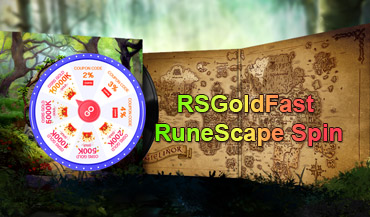Reader, Writer, Web Designer, Husband, Son, Brother, Engineer
Our AuthorsHow to Get Lifesbane in Diablo 4
Below, we'll cover everything you need to know about Lifesbane in Diablo 4.
What Is Lifesbane in Diablo 4
Lifesbane is a rare Herb that grows primarily in the arid region of Kehjistan, one of Sanctuary's most hostile environments. It's easily recognizable by its twisted stem and small, pale berries that seem to form a haunting, face-like pattern, giving the herb its unsettling name. According to in-game lore, Lifesbane is native to Kehjistan and is highly sought after by alchemists for its toxic and sleep-inducing properties.
Like other herbs in Diablo 4, Lifesbane is a vital crafting material used at The Alchemist, a key NPC who allows players to upgrade potions and brew special concoctions. Herbs like Lifesbane are essential to creating various Diablo 4 items, especially Elixirs, Incense, and Healing Potions that can significantly boost your survivability in combat.
Where to Find Lifesbane in Diablo 4
The most reliable region to farm Lifesbane is Kehjistan, the sun-scorched desert region located in the southern part of the map. While the herb occasionally appears elsewhere, Kehjistan's wilds are the primary source. You can recognize potential spawn points by their glowing green aura, which indicates that a harvestable herb is nearby.
Here are a few farming tips to help you collect Lifesbane efficiently:
1. Explore the Kehjistan Wilderness
Roam through the open desert zones, especially around oases, cliffs, and areas where vegetation is visible. Herbs tend to grow near rocky terrain or water sources.
2. Use Mounts for Faster Travel
Since herb spawns are somewhat random, using your mount allows you to cover more ground quickly and collect more Lifesbane per run.
3. Complete Side Quests and Events
Certain World Events and Side Quests in Kehjistan may lead you through regions rich in herbs. While completing them, keep an eye out for sparkling plants you can harvest.
4. Check Herb Respawn Times
Once harvested, herbs take time to respawn. To optimize your farming route, make a loop around Kehjistan's map and return to previous locations after about 10–15 minutes.
5. Consider Trading or Buying
If you're short on time, you can also use Diablo 4 Gold to trade with other players for Lifesbane or for crafted items that require it. Since Lifesbane is a valuable herb, it often sells for a premium, especially early in the season.
Lifesbane Crafting Uses at The Alchemist
Once you've gathered enough Lifesbane, head to The Alchemist in any major city (such as Kyovashad or Gea Kul). Here, you can use the herb to craft various Diablo 4 Items that enhance your gameplay. Lifesbane is a key ingredient in multiple recipes, including:
1. Greater Healing Potion
A more powerful version of the standard healing potion, the Greater Healing Potion restores a significant amount of health instantly. It's essential for mid-level and high-tier players tackling tougher dungeons or world bosses.
2. Major Healing Potion
Even stronger than the Greater Healing Potion, this item can be a literal lifesaver during endgame content. Stocking up on these potions ensures you can survive prolonged boss fights or chaotic group battles.
3. Weak Elixir of Fire Resistance
This Elixir provides temporary protection against fire-based attacks, ideal when battling fiery demons or navigating lava-filled regions. It's particularly useful in dungeons with high elemental damage.
4. Weak Assault Elixir
This Elixir boosts your attack speed for a limited duration, allowing you to deal more damage per second. It's a great choice for classes that rely on fast strikes, such as Rogues or Barbarians.
In addition to these, Lifesbane may also be used in crafting Incense, which grants buffs to nearby allies when burned, making it a must-have for players who often participate in co-op or raid-style gameplay.
Efficient Lifesbane Farming Strategies
To maximize your yield of Lifesbane, try these advanced farming techniques:
Combine Herb Runs with Resource Collection: While searching for Lifesbane, gather other herbs like Gallowvine and Biteberry. These can be used to craft different Diablo 4 Items or sold for extra Diablo 4 Gold.
Increase Gathering Efficiency: Equip gear or Elixirs that enhance movement speed or resource drop rates to streamline your farming sessions.
Track Herb Nodes on the Map: Some community maps or third-party tools allow you to mark and revisit known spawn locations. This can drastically improve your gathering routes.
Farm During Off-Peak Hours: In online play, herb spawn points might be contested. Gathering during off-peak times reduces competition and increases your chances of finding Lifesbane.
Final Thoughts
Lifesbane might look sinister, but it's one of the most important herbs in Diablo 4. Its toxic nature makes it a crucial ingredient in many of the Alchemist's most potent recipes. Whether you're brewing Elixirs to enhance your attacks or crafting Incense to aid your team, collecting Lifesbane ensures you're well-prepared for the dangers of Sanctuary.
For players looking to make the most of their time, combining herb farming with gold farming is an efficient strategy. By collecting Lifesbane and other valuable materials, you can craft powerful Diablo 4 Items, sell them to other players, and earn plenty of Diablo 4 Gold in the process. Mastering these systems will make you not just a survivor, but a true alchemical powerhouse in the world of Diablo 4.
Our Authors
Recently read
-
EA FC 26 TOTW 7 Lineup Breakdown
Nov-01-2025 PST /FC 26 -
How to Get Lifesbane in Diablo 4
Nov-01-2025 PST /Diablo4 -
The Ultimate Old School RuneScape Ranged Gear and Weapon Guide
Oct-30-2025 PST /Runescape

